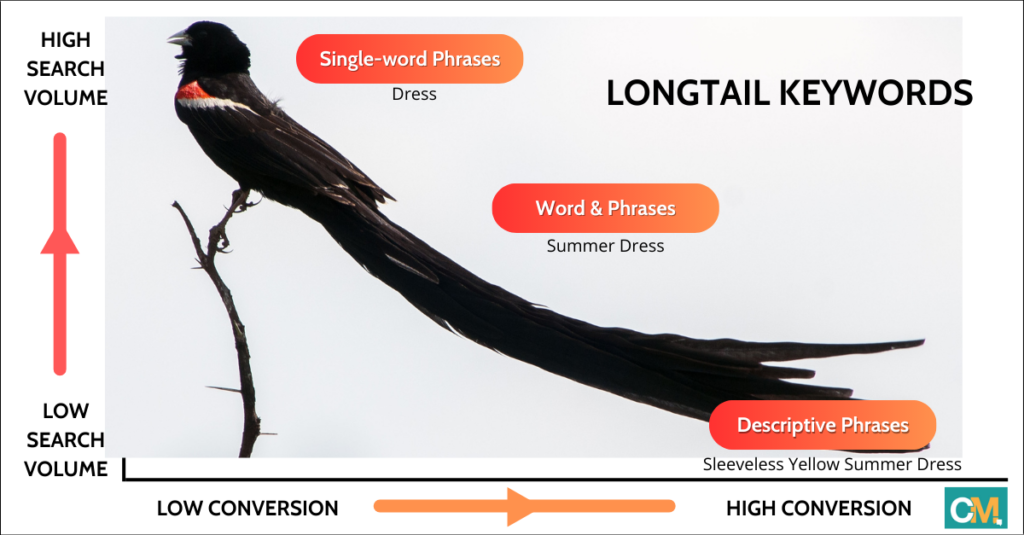
SEO, SEM, PPC, Oh My!
To the average business person, digital marketing may sometimes seem like a mishmash of meaningless acronyms: SEO, SEM, PPC, ROI, CTR… the list goes on.
You may hear the most about three strategies when it comes to internet marketing: SEM, SEO and PPC. You may wonder, which is the most important? The answer is all of them. Here’s why:
- Search engine marketing (SEM) refers to paid and unpaid tactics to draw traffic to your website.
- Search engine optimization (SEO) refers to the organic (unpaid) tactics to make your website stand out on search engine results pages (SERP).
- Pay-per-Click (PPC) refers to paid ads.
SEO
First, SEO. One of the most important things to remember is that people searching the internet are not interested in putting a ton of effort into their searches and are easily distracted. A study has shown that people’s average attention span is eight seconds, less than that of a goldfish. And some 97% of searchers don’t go beyond the first page of search results. You want people to find you fast – or better yet, first – when they do a web search.

SEO stands for search engine optimization. It’s all about getting your website to rank high organically (free) in search engine results pages. The way to do that is to make your pages as Google-friendly and discoverable as possible by including keywords and phrases (long-tail keywords) that people frequently search for.
Now, in the old days (actually just a few years ago, which is a lifetime on the internet), there were a lot of SEO experts who knew how to game the system to get pages to rank higher in search results. The emphasis was on quantity – lots of low-quality content stuffed with as many keywords as possible that would trick people into going to a site. So, people ended up on web pages irrelevant to what they searched. It seemed great for businesses: Look how many people visit our website!
The problem was it wasn’t good for consumers – it just made them mad – and in the end, it wasn’t great if you wanted quality prospects. Why draw a bunch of unqualified leads to your site if they aren’t your target audience and they probably won’t buy from you? It’s a waste of your time and theirs. A lot of traffic doesn’t equal conversions and sales if the traffic is from unqualified prospects.
These “black hat” SEO practices – tactics that focus on gaming search engines and not on finding humans in your target market – caused Google to make many changes to its algorithm, the formulas used to determine what a searcher will see on search engine results pages in response to a query.
The Google Algorithm
No one (except Google) knows precisely what goes into the algorithm; hundreds of signals factor into the end result. We do know that current algorithms favor quality over quantity, relevance over randomness, and reputation over repetition. It’s become challenging to fool these algorithms – and you may be penalized by Google if you try.
A few of the most important signals Google looks at:
-
- Does the site have quality, relevant content?
- Do other reputable websites link to your site?
- Is your site optimized for a mobile experience?
- Do your pages load quickly?
- Is the traffic to your site legitimate?
In other words, the better your site is for the user, the more people visit it, and the better your chance of ranking higher in search engine results.
Here’s the thing: SEO is the long game. It can take several months or longer to see any real results in organic search.
PPC
Paid ads – via Google, Microsoft Ads, or another search engine – get results more quickly than SEO. The way paid ads work is that you target search words relevant to your product and audience. There are simple one-word keywords and long-tail keywords: Long-tail keywords comprise a string of words that make up a search term, but they’re more precise, and as search terms become more specific, the competition becomes less.
Long-term keywords may get fewer searches, but the searchers are looking for a solution to their current problem, so their conversion intent is higher.

Here’s the thing: Paying for ads isn’t enough to get you to the first page, especially if you’re in a very competitive industry. In an auction, Google determines your Ad Rank -whether the ad will show and, if so, in which position on a SERP.
Ad Rank changes in each auction depending on competition, user search context, and ad quality. Google calculates ad quality based on the following:
- Expected clickthrough rate
- Ad relevance
- Landing page experience
- CPC bid
Notice that one factor is the relevance of your landing page. That goes back to SEO. SEO and PPC work best together, like peanut butter and jelly. The better the landing page experience, the better the quality score. The better the quality score, the better the ad rank.
So, polish up your website SEO to get the most out of your PPC efforts.
SEM
So, back to SEM, which we learned earlier, is simply attracting web traffic (and ultimately customers) via SEO and PPC. There are two ways to do this: By yourself or by hiring someone else.
Have someone else do it.
SEM takes a lot of time – even after the initial learning curve. If you’re tackling SEO and PPC yourself, that’s time that takes you away from running your business – your most important task. If you have the staff to do it, that’s great, but you might benefit by hiring a contractor or an agency to do the work for you. They will set up, monitor and do the reporting for your campaigns and have the training to see opportunities and challenges for which they can make changes on the fly.
Do it yourself.
I won’t try to tell you that SEM is rocket science. It’s not. But it requires a strong understanding of search, marketing, and keywords. In addition, Google makes small changes every day and broad changes several times a year. Keeping up with algorithm changes is almost a job in itself.
Occasionally the changes are significant, and if Google makes a major change to its algorithm, your rank could take a hit that could take a while to come back from. Someone needs to keep up with current algorithms and be ready to make adjustments if an algorithm affects your page rank.
Do you really want to do that yourself? If so, there are plenty of good resources available. Books tend to be out of date before they’re published, but websites such as Search Engine Land and Wordstream have free information that’s updated regularly. And, of course, there’s Google itself, which has tutorials and certifications.
How much does it cost?
Google AdWords costs as much as you want to pay. Depending on what you want to accomplish and how much you have for a budget, you can spend $10 a day or $100. Or $1,000. In addition, if you hire someone to handle your SEM, they will charge a fee for managing your account, making necessary changes, and reporting results. A freelancer may charge an hourly fee, while an agency may charge a flat monthly fee.
The bottom line is that concentrating on PPC over SEO will bring you traffic and leads more quickly. But there are two things to keep in mind:
- As soon as you stop paying for ads, you no longer appear on SERPs. So, PPC works quickly but disappears just as fast.
- Organic takes longer but is more long-lasting. If you achieve a high SERP rank, it’s hard to get knocked back down unless there’s a swift increase in competition or you don’t keep up with your SEO.
Your website is your lead magnet, and PPC and SEO are the two strategies that help it work.

Recent Comments